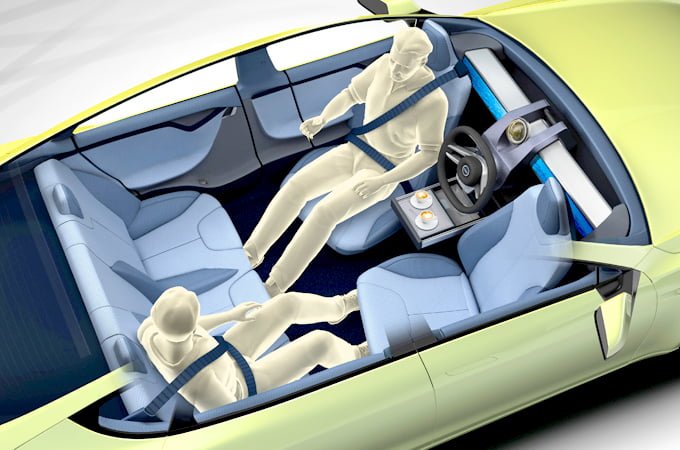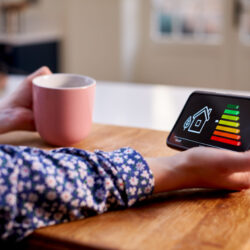An autonomous vehicle (AV), often called a self-driving car, is any vehicle that uses cameras and other sensory data to navigate without the assistance of a human driver. While it isn’t entirely new technology, interest has expanded in recent years, and the US market for at least partially driverless vehicles is expected to reach $36 billion by 2025.
Waymo, formerly known as the Google self-driving car project, is an industry leader making huge investments in autonomous car development. While driverless cars seem like they offer obvious benefits over regular cars to many, it’s hard to say when they might become part of our everyday lives in the United States. Still, this is groundbreaking technology with a fascinating history, and the following are just some of the more interesting self-driving car statistics.
1. The concept dates back to the ‘30s.
While Waymo may be a modern leader in vehicle automation, they were hardly the first to have the idea. GM’s 1939 exhibit showed off the first-ever autonomous car, which was an electric vehicle guided by electromagnetic fields generated from metal spikes embedded in the road.
Obviously, the technology would have a long way to go, but in 1958 GM produced a vehicle with sensors in the front that could detect electrical current from a wire in the road. While the technology was primitive, the current could be used to manipulate the car’s steering wheel.
2. It became a reality in 1994.
Ernst Dickmanns is a German scientist who is often credited as “the man who actually invented self-driving cars.” In 1986 he began running tests with a Mercedes van he had installed with a computer system and sensors, and by 1994 he had two Mercedes 500 SELs driving on France’s Autoroute 1 with a computer system manipulating the steering wheel, accelerator, and brake pedals of each vehicle.
3. Google started Waymo in secret.
Google began work on its autonomous car project, now called Waymo, in secret in 2009. The project was headed by Sebastian Thrun, who led his Stanford University robotics team to win the DARPA Grand Challenge.
A few years after starting the project, Google revealed that its autonomous vehicles had driven over 300,000 miles with computer control without a single-car crash.
4. Waymo cars hold the most autonomous miles.
In 2014, Waymo revealed a prototype with no steering wheel and no gas or brake pedals, making it totally autonomous. As of last year, Waymo’s Alphabet robot cars have driven a total of 8 million autonomous miles on public roads.
Uber holds the record for second-most autonomous miles traveled on US roads at 3 million, putting Waymo far ahead of any other competitors. Waymo also has over 7 billion miles driven in simulation using real-world data.
5. Major manufacturers have joined in.
Of course, it was just a matter of time before the major automakers like GM, Ford, Mercedes, and BMW began work on their own autonomous mode technologies, and by 2013 many of the major manufacturers were hard at work. Tesla CEO Elon Musk has promised fully self-driving Tesla cars later this year, according to USA Today, and is promising a robo-taxi car service by next year. GM had similar ambitions with its cruise avs by the end of this year, but they were delayed.
Uber has also been exploring driverless car technology, and they now have cars back on the road following a nine-month recall. Apple has long since been rumored to be working on its own answer to an autopilot mode for vehicles, but the future of the project is currently uncertain.
6. There have been five recorded fatalities thus far.
Naturally, fatalities are the biggest concern regarding these cars on US roadways for human drivers, pedestrians, and lawmakers alike. One of the primary concerns with AVs is that their autonomous nature encourages disengagement from the realities of driving and its dangers. The first fatality took place in Florida when a Tesla Model S in autopilot mode was unable to brake in time when a tractor-trailer pulled in front of it, killing the AV driver. Three other AV drivers have been killed in crashes.
Pedestrian fatalities are also sadly inevitable, and there has been one thus far. This was caused by an Uber vehicle, with a backup AV driver, on a public road in Tempe, Arizona. According to the New York Times, Arizona has been lenient in regard to the testing of autopilot vehicles, and California has since become more receptive as well.
In fact, Uber has autopilot vehicles on the streets of San Francisco following its suspension after the Arizona fatality. A separate article from the New York Times states that prosecutors are not believed to be charging Uber for the accident.
7. There have been 13 serious crashes thus far.
It’s difficult to determine the total amount of collisions AVs have been involved in when you consider that minor rear-end crashes have been fairly common. One of the strangest of these serious car accidents took place when a Tesla Model X had a collision with a highway barrier in Mountain View, California. The collision resulted in the death of the driver, and the conditions of the car crash have not been replicated.
The Tesla Model S has been involved with a number of other crashes while in autopilot mode, and the NTSB has cited both autopilot and driver error as factors in car accidents. According to the Washington Post, residents of San Francisco, who are familiar with self-driving technology, are wary of having AVs tested in their neighborhoods.
8. Auto car systems may change insurance.
As of now, there are technically no full autopilot cars available for consumers on the market. Rather, all current models simply have automated features. Car drivers who own these vehicles will need to have insurance, the same as any other vehicles, and current rates may be higher due to the concern surrounding these vehicles. That all may be about to change soon, however.
According to Reuters, autonomous vehicles may shift liability away from consumers and toward manufacturers. Who should be blamed, after all, if it’s faulty sensors that cause a vehicle to run a stop sign rather than the driver? New insurance models may arise that hold both the driver and the manufacturer liable for car accidents.
9. Safety vs. human car drivers.
Vehicles with an autopilot currently have a higher frequency of accidents compared to human-operated vehicles, but the accidents tend to be less severe. Per million miles driven on public roads, humans have approximately 4.1 car crashes vs. autonomous cars having 9.1. The lack of severity in self-driving vehicle accidents may be due to factors such as these cars being more likely to obey the speed limit, pay closer attention to stop signs and other markers, and possessing a vision system that can’t get distracted.
10. Consumer acceptance is still low.
While the United States is expected to lead the global market in autonomous technology for the foreseeable future, roughly 71 percent of respondents in a AAA recent survey indicated that they still wouldn’t want to ride in a totally automated car.
Respondents do, however, seem comfortable with slower-moving automated vehicles, such as automated shuttles at airports, and more exposure to AV features will likely see public opinion turn.
11. Test drive results are improving rapidly.
As an industry leader, it’s likely no surprise to see Waymo making significant progress each year with its test drives. Just last year, Waymo car drivers only had to take manual control of vehicles once every 11,018 miles, which is nearly double the distance of the previous year.
12. Accidents aren’t always caused by autonomous cars.
While there is arguably a long way to go before full-auto cats are ready for the general public, it would be unfair to suggest every accident they’re involved in is their fault. Just one example of an autopilot car accident caused by a human driver was when a Waymo van was hit by a human driver who swerved to avoid hitting another vehicle on the road. The driver in the Waymo van suffered minor injuries. USA Today has a video of the incident.
13. Testing regulations require a human driver.
While the goal of testing autonomous vehicles is naturally to see if they can perform safely on their own, regulations set by the California DMV require a human to be present at all times to supervise the tests and intervene when necessary. The DMV also requires written reports of all collisions and technology disengagements before allowing the vehicles on public roads.
14. Business owners believe in autonomous delivery.
Consumer confidence in autopilot vehicles seems to increase dramatically when the vehicles are simply delivering products rather than passengers. Small business owners, in particular, believe they need better technology on their side in order to thrive in a world dominated by e-commerce, and this means acquiring autonomous delivery vehicles for maximum efficiency.
15. Self-driving cars mean more opportunities for disabled citizens.
Many Americans with disabilities either have difficulty driving or are unable to drive at all. Autonomous vehicles give those with disabilities more options to carry out their day to day activities as well as enjoy all of their rights as citizens. As technology advances, it provides a unique opportunity to aid those in the disabled community, and serious consideration must be given to take full advantage of this.





